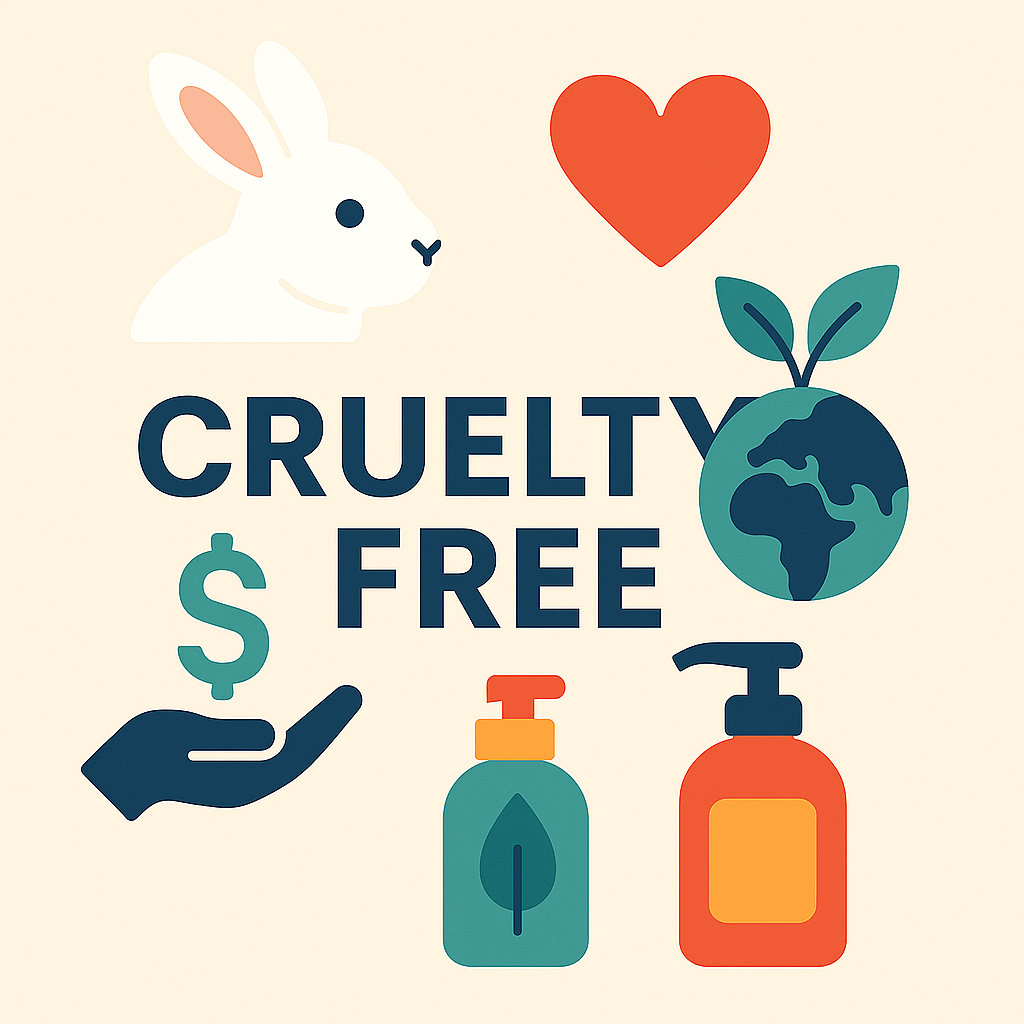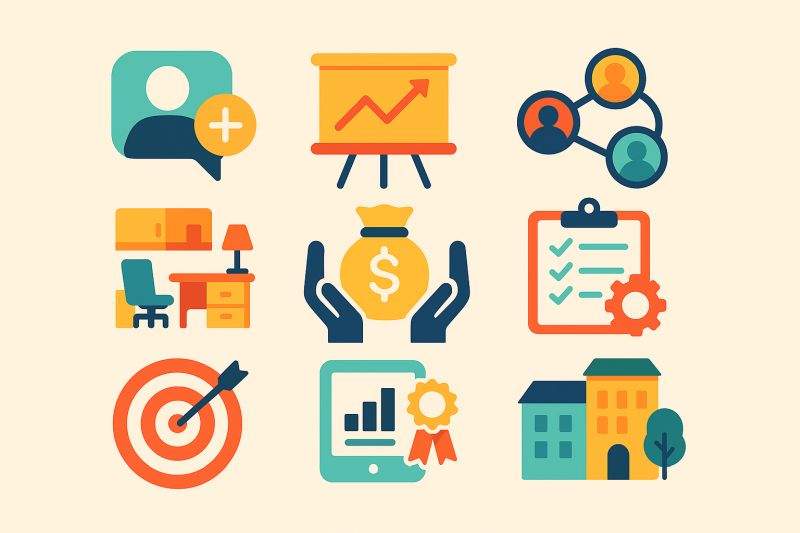
Cruelty-free isn’t a niche kindness play anymore—it’s a full-stack value engine that boosts animal welfare, lowers environmental liabilities, streamlines R &D, cushions your wallet, and grows shareholder value all in one swing. Below is a stakeholder-by-stakeholder breakdown of the benefits, supported by the latest data and regulatory shifts.
1. Test Animals: A Life Literally Saved
- Scale of suffering – More than 100 million animals are still used in labs worldwide each year for cosmetics, household chemicals, and biomedical trials. In cosmetics alone, rabbits and guinea pigs endure painful irritation or lethal dose tests even though validated non-animal alternatives exist.
- Legal momentum – Forty nations—including all EU members—now ban animal testing for cosmetics. California’s Cruelty-Free Cosmetics Act extends that blockade to the world’s 5th-largest economy: selling a product tested on animals after Jan 1 2020 is illegal statewide. pcrm.org
- Humane alternatives – 3-D reconstructed human skin, organ-on-chip microfluidics, and advanced computer modeling deliver equal or superior predictive power without sacrificing sentient beings. Cruelty Free International notes these methods are often “cheaper, quicker and more effective.” crueltyfreeinternational.org
Stakeholder take-away: every purchase that bypasses animal-tested SKUs tangibly reduces demand for a supply chain built on pain.
2. Consumers: Safety, Savings, and Shared Values
2.1 Comparable—or Better—Efficacy
Modern cruelty-free brands are formulating with gold-standard actives (retinoids, niacinamide, peptide blends) sourced from the same suppliers Big Beauty uses. What changes is the validation pipeline, not the performance curve.
2.2 Lower Retail Prices via Faster R & D
Non-animal testing can slash safety-assessment timelines from months to days, letting companies recoup costs sooner. Eliminating animal housing, veterinary care, and disposal saves millions annually—savings that agile indie brands frequently pass along in competitive pricing. invitrointl.com
2.3 Values Alignment
A 2023 peer-reviewed survey of 326 U.S. shoppers reported 73.9 % strong purchase intention for cruelty-free items, citing moral satisfaction and brand trust as key drivers. sciencedirect.com
Bottom-line for Fiscal Means readers: choosing cruelty-free costs nothing in efficacy, often less in dollars, and adds the “sleep-well” dividend of ethical purchasing.
3. Brand Owners & Investors: Risk Down, Return Up
| Benefit | Why It Matters |
|---|---|
| Regulatory Access | EU, U.K., India, Israel, and California now bar animal-tested cosmetics; cruelty-free pipelines avoid costly reformulations or market blackouts. |
| Time-to-Market | Organs-on-chips predict human toxicity 10–100 × faster than animal models. Products launch sooner, compounding revenue gains. |
| Cost of Capital | ESG-screened funds control $8 trillion+ in U.S. assets; animal-welfare controversies trigger exclusions. |
| Reputation Buffer | A single viral video of testing labs can wipe years of brand equity (ask any number of legacy cosmetics giants). A cruelty-free label inoculates against PR disaster. |
| Market Growth | Cruelty-free cosmetics hit $14.8 billion in 2023 and are projected to reach $23.5 billion by 2030 (CAGR 6.8 %). grandviewresearch.com |
4. Employees & Talent Acquisition
Millennials and Gen Z—now more than half the U.S. labor force—prefer employers whose values mirror their own. Offering genuinely cruelty-free lines increases worker pride, improves retention, and aids recruitment, especially for scientists eager to work on cutting-edge in-vitro methods rather than legacy animal protocols.
5. Retail and E-Commerce Platforms
Shelf space is finite. Stocking cruelty-free SKUs:
- Boosts velocity – They often out-perform conventional equivalents in trend-tracking beauty chains like Sephora’s “Clean at Sephora” program.
- Reduces returns – Shoppers who vote with their ethics also display higher brand loyalty scores, shrinking refund costs.
- Future-proofs assortment – As more jurisdictions outlaw animal-tested imports, retailers already carrying cruelty-free lines avoid dead inventory.
6. Regulatory Agencies & Healthcare Systems
In April 2025 the U.S. FDA announced a phased move toward non-animal “New Approach Methodologies” (NAMs) for drug safety data, promising faster reviews and lower development costs—savings that eventually trickle into drug pricing. reuters.com
When agencies embrace NAMs, public-sector spending on in-house animal facilities drops, freeing budget for core health initiatives.
7. Environment: Less Hazardous Waste, Lower Carbon
Animal research isn’t just an ethical issue—it’s an environmental one:
- Hazardous waste – Carcasses laced with test chemicals are incinerated on-site, producing toxic emissions and carbon load. faunalytics.org
- Lab supplies – Bedding, cages, syringes, PPE—all single-use plastics—add to landfill or incinerator streams.
- Energy use – Vivariums are energy hogs requiring HEPA filtration, negative-pressure HVAC, and 24/7 climate control.
Replacing animal protocols with micro-plate cell assays or computer modeling slashes energy and waste footprints up to 90 %, according to environmental audits of academic labs. animalfreescienceadvocacy.org.au
8. Innovation & Knowledge Spillovers
Investment in cruelty-free science accelerates breakthroughs beneficial far beyond cosmetics:
- Organ-chips first grew under cosmetics R &D money; they now guide oncology drug discovery.
- Human-cell 3-D printing is improving precision-toxicity screens for pesticides and food additives.
- In-silico AI modeling shrinks chemical libraries before any in vitro work, saving billions in computational chemistry for other industries.
These spillovers create downstream jobs in bio-printing, microfluidics, and data science—industries with higher wage multipliers than traditional animal husbandry or waste-management roles.
9. Macro-economic Health & Trade
Countries pushing cruelty-free innovation seize first-mover export advantages. The EU’s 2013 animal-testing ban turned European labs into global leaders for alternative methods, creating patent clusters now licensed worldwide. Conversely, Australia’s lag in national funding for non-animal science risks “being left behind” as other economies move forward. theguardian.com
Addressing Common Objections
| Objection | Reality Check |
|---|---|
| “Non-animal tests aren’t validated.” | Over 40 OECD test guidelines now accept non-animal methods for skin irritation, eye corrosion, sensitization, and more. |
| “Cruelty-free means higher prices.” | Many drugstore-tier brands (e.g., e.l.f., The Ordinary) undercut legacy competitors while meeting Leaping Bunny standards—thanks to cheaper, faster assays. |
| “My dermatologist brand still tests ‘where required by law,’ so I have no choice.” | Thousands of SKUs—from SPF to Rx-strength retinoids—now confirm they never test anywhere, period. California’s law plus China’s easing of mandatory testing (for most imports) remove excuses. |
| “Switching lines is inconvenient.” | Ingredient transparency sites (INCIdecoder, SkinCarisma) let you cross-reference actives. Match the INCI list, swap the brand—efficacy stays. |
Quick-Start Guide for Fiscal Means Readers
- Spot the real logos
Leaping Bunny and PETA Beauty Without Bunnies require supplier audits. “Not tested on animals” text alone is meaningless. - Audit your shelf
- Replace basics first: shampoo, hand soap, dish liquid, laundry pods.
- Next, high-turnover items like mascara or shaving gel.
- Use coupon math
Cruelty-free brands run direct-to-consumer promos (15–25 % off) more often than legacy retailers hampered by wholesale contracts. Stack with cash-back cards to drop net cost below drugstore staples. - Invest with your conscience
ESG funds such as “Green Alpha Next Economy” screen out animal-testing companies. Or buy shares in cruelty-free leaders riding the 6–9 % CAGR curve. linkedin.com - Advocate locally
Petition campus bookstores, pharmacy chains, or even your co-op board to stock cruelty-free cleaning lines. Collective demand signals accelerate supply shifts.
Conclusion: A Virtuous Flywheel
Switching to cruelty-free products isn’t a sacrifice; it’s an upgrade that delivers:
- Immediate moral ROI—animals are spared.
- Competitive consumer pricing—R &D costs drop.
- Compliance certainty—brands sail through new legislation.
- Environmental relief—hazardous waste and energy loads plunge.
- Investor alpha—the fastest-growing cosmetics sub-sector rides regulatory tailwinds.
Stakeholders from rabbit to retiree all win.
So next time you restock sunscreen or dishwasher tabs, spin the bottle around, look for the bunny, and remember: in 2025, cruelty-free is not just kinder; it’s fiscally smarter.
R. A. Goldston, CPA at Large

 Previous post
Previous post
 Next post
Next post
